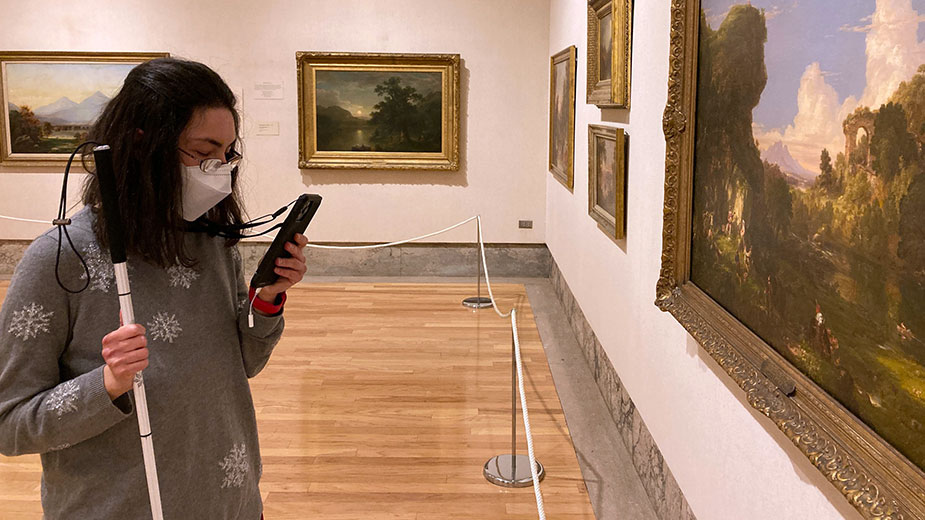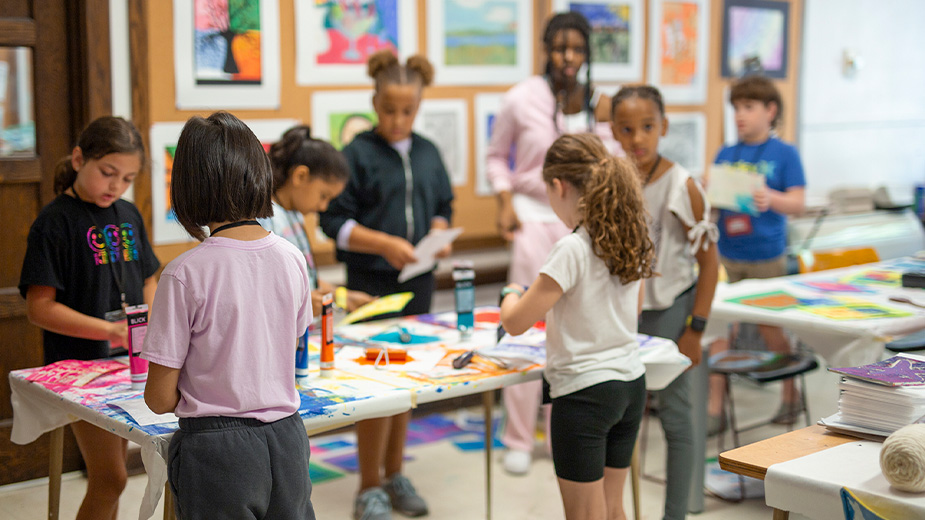Butler Museum Embraces Use of Aira App for the Visually Impaired
YOUNGSTOWN, Ohio — People who are blind or have low vision can enjoy The Butler Institute of American Art through an online service that describes art.
The visual interpreting system – a product of Aira Tech Corp. – connects users to agents via a free app. Users must first download the app from the App Store or Google Play (or click the QR code at ButlerArt.com) and create a profile.
The Butler began its partnership with the Aira (pronounced “eye-ra”) app in December, becoming the first museum in the region to do so. The museum’s efforts are being led by Joy Mistovich of Boardman, who was hired by the museum in November. Mistovich, who has low vision, has been using the Aira app for several years.
To use Aira, the visitor first opens the app and then taps a “button” that it displays, which summons an Aira agent. The patron then uses her phone as a video camera so that the agent – working remotely from home or office – can see what the user is facing, and also talk with her.
The agent will describe works of art with detail that allows the user to see it in her mind’s eye. The agent will also read the information plaque for each piece, and offer any other details users request, including helping them through the galleries or to find the gift shop or restroom.
“It’s a second set of eyes,” said Mistovich, as she demonstrated the use of the app.
Several hundred museums nationwide have partnered with Aira so far, she said. That’s a tiny percentage of the 35,000 or so art, nature, history, science and other museums in the United States.
Becoming an Aira agent is not easy. “They have multiple skill sets,” Mistovich said. “Some have gone to art school, and others know a lot about technology. They can get any task done [for the user].”
Fewer than 1% of applicants are selected to be Aira agents.
“The amount of training is intense,” Mistovich said. “You have to be familiar with the blind and low-vision community.”
She will soon start training Butler docents in the use of the app so they can assist patrons.
“The docents are all specialists on our art collection,” noted Wendy Swick, the Butler’s marketing director.
The Butler first became interested in the Aira app a few years ago but had to put those plans on hold when the pandemic hit, Swick said. The service is very much in line with the goals of all museums, she said.
“It increases accessibility, which is something that museums have been trying to improve upon and concentrate on,” she said.
The Aira service community was founded by Suman Kanuganti of California, “whose mission was to create a revolutionary service that would aid blind or low-vision people in becoming more independent and engaged in their lives,” Mistovich said.
The Aira app service can also be used to help blind or low-vision persons at libraries, colleges, stores, hotels or just about anywhere, she said.
“It opens the world and provide access to visual information to anyone who needs it.”
Pictured: Joy Mistovich demonstrates the use of the Aira app for blind or low-vision people at the Butler Institute of American Art. Mistovich, who has low vision, was hired as part of the museum’s education staff last year.
Copyright 2024 The Business Journal, Youngstown, Ohio.



